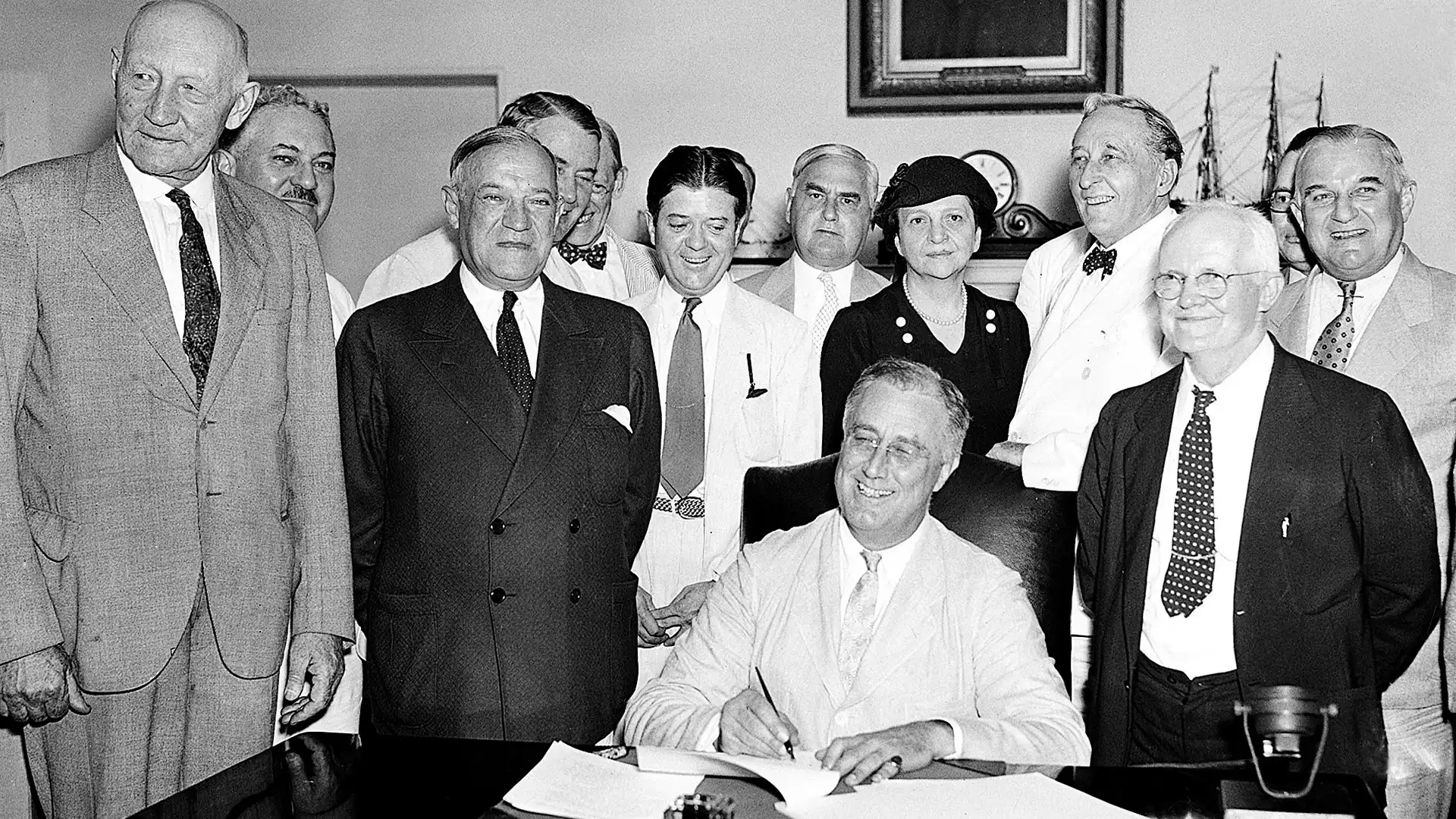
"When President Franklin D. Roosevelt (FDR) signed the Social Security Act into law 90 years ago this week, he vowed it would provide economic stability to older people while giving the U.S. "an economic structure of vastly greater soundness." Today, the program provides benefits to almost 69 million Americans monthly and is a major source of income for people over 65, but faces a looming shortfall in funds."
"The so-called go-broke date for Social Security has been moved up to 2034, meaning the program will only be able to pay 81% of benefits after that point, according to a report released in June."
"Proposed solutions to shore up Social Security are being looked at, but the program remains far from the sound economic system envisioned by FDR, due to changes made or not made under both Democratic and Republican presidents."
"Social Security faces threats under the Trump administration, including slashed agency staffing and false claims regarding millions of deceased individuals receiving benefits, impacting the perception and stability of the program."
The Social Security Act, signed by Franklin D. Roosevelt 90 years ago, aimed to provide economic stability for older Americans. Today, it supports nearly 69 million individuals monthly but faces significant financial challenges with an anticipated shortfall by 2034, reducing benefits to 81%. Factors contributing to this crisis include changes initiated by past administrations and recent legislation. The program's future stability is jeopardized by agency staffing cuts and misinformation surrounding benefits, creating uncertainty in its ability to maintain the foundation Roosevelt envisioned.
Read at Fast Company
Unable to calculate read time
Collection
[
|
...
]